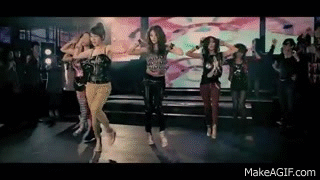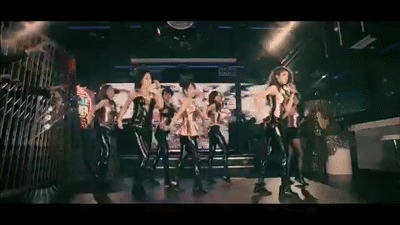EDM and How It Entered the "Mainstream" and K-Pop
- Brie
- Jul 3, 2020
- 5 min read
EDM....What is it? Most people know EDM as that fast-paced, squeaky sounding music you see in movie scenes where people are at clubs or raves getting high or tripping on acid. Britannica's definition of EDM though is that it is “an umbrella term for a panoply of musical styles that emerged in the mid-1980s” (Britannica), and is most notably characterized for its use of “deliberately inorganic sounds and timbres” (Britannica). EDM is much more than this though. The umbrella genre term covers subgenres and the subgenres' subgenres. It doesn't even begin to describe the actual music.
Let's start with some history first. The first influences of EDM/Electronic Dance first emerged back in the early '70s with genres like Disco and Synth-Pop music (thank you Donna Summer for "I Feel Love"). However, the modern-day EDM we know actually popped up in the 1990s. That's when the genres techno, dubstep, house, and trance came about. These genres developed in the Chicago and Detroit underground clubs, where DJs could experiment with the different electronic technologies, like the MIDI, live. From there, DJs and producers continued to combine and mix genres to get the plethora of Electronic Dance Music we have to today.
Artists like Skrillex, Diplo, Daft Punk, Tiesto and Steve Aoki helped popularize the type of EDM most perceive the genre as: fast, a little squeaky at times, and "funky" sounding. The newer music has grown to be "less squeaky," but back in the '90s/early 2000s, that's what EDM was known for. It was associated with underground raves, drugs, and scenes like this:
In an attempt to "rebrand" the Electronic Dance Music genre and move it away from the rave/drug-related image, U.S. music magazines/papers/reporters coined the abbreviated term EDM. The genre hasn't moved away from that image entirely, but it's shifting.
Well this history lesson is all cool and fun, what does this have to do with EDM in the mainstream or K-Pop?
Good Question! Clearly, the perceived version of EDM isn't what you hear on the radio or in your favorite K-Pop group's song (scratch that, Stray Kids' intro tracks to their "Levanter" and "Yellow Wood" sounds a bit like the well-known versions of EDM). As I already mentioned, EDM has blended its own genres together. This blended version is the type of EDM I'm discussing. Many chart-topping hits that feature Electronic Music collaborations are blends of pop and House or Future Bass. Why does this work? Well, let's start with some examples.
House is characterized by rhythms provided by drum machines, off-beat hi-hat cymbals, and synthesized bass lines. A pretty good example: Avicii's "Wake Me Up". Let's focus on just the chorus for a quick analysis. It has a prominent, four-on-the-floor beat and claps that replace a "traditional" hi-hat" sound occurring between every beat (making it off-beat). The bass line, if you're listening closely, is synthesized and hidden beneath the higher melody that plays and helps drive the song forward. You can find this in Afrojack's "Take Over Control", and Martin Garrix's "Animals". A less obvious example, that takes much closer listening and a deeper understanding of the House sound is David Guetta's "Titanium". A more recent House hit: "No Promises" by Cheat Codes ft. Demi Lovato. All of these, at some point, were summer hits. No one really thought of them as EDM though. They were these catchy pop songs with good vibes.
Future Bass is described by Complex magazine as "a pretty, more chilled-out version of trap and dubstep". A quick google search lets you know that this EDM genre is most recognizable by its modulated synthesizer bass sounds, less intense beat drops, and often pulsating synth chords. Well-known Future Bass producer Flume's song "Never Be Like You" was named one of the best song of the first half of 2016 by Rolling Stone, and if you're thinking "well I've never heard of him or that song" think again. Click on the link. I'm 95% sure you know the song. That's not the only Future Bass song you know. "Say It" by the same producer ft. Tove Lo, Marshmello and Khalid's "Silence", and Illenium, The Chainsmokers, and Lennon Stella's 2019 collaboration "Takeaway" all fall under the Future Bass umbrella. While the last two may not be as much of a "pure" future bass sound as Flume's "Never Be Like You", it still shows the popularity of the genre in the U.S. mainstream.
The above mentioned only shows the growing popularity of EDM in the U.S., but what about K-Pop? Even though I just recently got into the EDM scene, I strongly believe K-Pop(and my brief middle school phase of aggressively listening to Skrillex and Diplo all day every day), was my doorway into EDM. In my full decade of being a K-Pop fan, I've noticed that K-Pop has been integrating EDM into its songs way before it was "cool" to do so. In fact, much of the 2000s - early 2010s K-Pop sounded like some type of electropop. Now-disbanded group T-ARA is a prime example of this. Their music, from their debut in 2009 to their disbandment in 2017, had an EDM sound added to it, meaning it was often categorized as electropop. T-ARA's "Sugar Free" and "Bo Peep Bo Peep" featured heavy synth sounds and a pretty heavy hitting bass. One of my personal T-ARA favorites is their 2012 hit "Lovey Dovey". The song is categorized as "nu-pop, dance-pop" and features pulsating synth notes, a "boots-n-cats" beat/sound (if you've tried beatboxing, you know what this is/sounds like), and a plethora of sampled, non-instrumental sounds (wind chimes, cow bells/empty bottle or glass sounds, etc.). The "Lovey Dovey" choreography even featured shuffling elements, something also affiliated with Electronic music.
Boy group SHINee also had music that toyed with electonic sounds. Their 2013 track "Everybody" brought a combined Electro House (or Complextro) and Dubstep sound to the K-Pop scene, while still sounding like K-Pop. The 2015 title track "View", which was part of their fourth studio album, Odd. This song in particular was more of a Deep House track, which is something that "mainstream" K-Pop hadn't seen yet. Another House song from them, "Good Evening", was released in 2018, this time with a Tropical House sound.
Sure there are plenty of examples and instances of EDM being present in mainstream and kpop music, but the question of how it happened still remains. Most of these songs, if not pointed out, wouldn't even be recognized as EDM to the general public. So how did we start listening to EDM without realizing it? Here's the answer: the formula for mainstream and K-Pop music overlaps with most EDM formulas, allowing them to merge together almost seamlessly. "Mainstream" and K-Pop both need to be catchy and easy to follow. This is usually done through the melodies that accompany the lyrics. EDM has the same premise, but with less words and only melodies. There's more space to play with melodies when there isn't a specific vocal timbre to compliment. EDM has a way of playing with melodies in multiple layers of the song, from the main melody, to the bass melody, to the bass line, to the higher, lighter, airy texture added through various plug-ins, that plays a variation of the main melody WITH THE MAIN MELODY AT THE SAME TIME. EDM, while mainly sounds, is surprisingly complex. However, the subtle complexity of EDM compliments the typical "simpleness" of mainstream music. Most pop melodies are based around the same five or six chords. EDM is able to take these same chords and distort, alter, and filter them in ways that makes simple pop songs sound fuller. It adds depth and color, and it does so subtly. It's not the "squeaky-squeak-squeak, loud bang, then sudden silence, then beat drop" EDM that's being played on the radio (usually). It's the EDM-infused pop song that has layers of fun, subtle sounds that surprise you in a good way, like a background sound that sounds like an old Nintendo starting, or a crowd cheering. It's this complimentary relationship that allowed EDM to flow into mainstream music without us even realizing it, and it's this relationship that will continue to bring EDM even more into the mainstream.





Comments